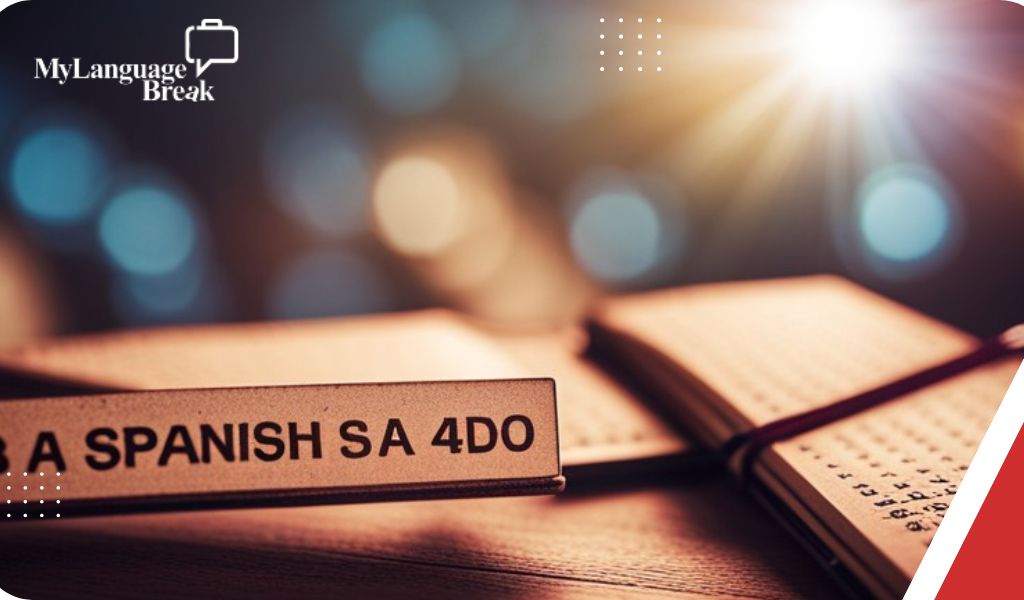Do you want to learn how to talk about the future tenses in Spanish? We will discuss the different future tenses in Spanish and how to use them correctly. There are three different future tenses in Spanish: the presente de futuro, el futuro simple, and el futuro perfecto. Each one of these tenses has a specific purpose, and it is important to know when to use each one. We will go over all of them in detail below!

Spanish Future Tense: Easy to Understand
As a beginner learning Spanish, it is normal to struggle with understanding complex grammar, especially when it comes to tenses that don’t even exist in English. However, future tense Spanish is easy to understand with three tenses that are the same as their English counterparts: Simple Future, Ir a + Infinitive Verb, and Future Perfect. In most cases, you can interchange all three forms of the future tense without ever sounding completely wrong.
1. The Future of Simple Tense
The future tense is an interesting topic to discuss, especially in terms of its usage and how it can be effectively applied in a sentence. In English, there are three primary future tenses: Simple Future, Future Perfect, and Future Continuous. The Simple Future is used to describe actions that will happen in the future, without indicating a specific point in time. The time frame could be interpreted as something happening in the immediate future, or something that will happen in years, even decades.
It’s important to note that the Simple Future is not limited to expressions of time; it can also be used to express intentions or promises. For example: “I promise I’ll call you tomorrow.” In this sentence, the speaker is committing to calling the other person tomorrow. Another common usage of the Simple Future is in conditional statements, such as “If I have enough money, I’ll buy a new car.” This sentence shows that the speaker has not yet decided whether they will buy a new car or not, but they are considering it.
The future tense is a curious thing. We can never be entirely certain what will happen, but we can make plans and assumptions based on what we hope will happen. In grammar, the future tense is used to describe an action that will take place in the future. It’s often used in promises and declarations of certainty, as in “I will finish this project by tomorrow.” It can also be used to ask questions about someone’s future plans, such as “What are you doing this weekend?”
How to Conjugate the Simple Future Tense
The simple future tense is used to indicate that an action or event will take place in the future. It is often used to make predictions or plans. In Spanish, the simple future tense is conjugated in the same way for all three verb groups – AR, IR & ER verbs. To form the simple future tense, all you need to do is add the appropriate ending to the infinitive form of the verb. For regular verbs, the endings are -é, -ás, -á, -emos, -éis, -án.
The Simple Future of Irregular Verbs
Since the future simple tense is so regular, you’ll be happy to know that there are only 12 basic future Spanish irregulars:
caber (to fit)
decir (to say)
haber (to have)
hacer (to do)
poder (can, to be able to)
poner (to put)
querer (to want)
tener (to have)
saber (to know)
salir (to leave, go out)
valer (to be worth)
venir (to come)
That’s it. No more! Of course, this doesn’t include compound forms like rehacer, predecir or reponer, but these variations conjugate exactly the same as their basic form.
Each of these verbs will have a different stem in the simple future form. For example, the stem for ‘be’ is ‘will be’, and the stem for ‘take’ is ‘will take’. You must memorize these stems to use them correctly in the future tense. Be sure to add the correct ending to each verb as well.

2. Ir a + Infinitive Verb (Going to)
When two verbs are combined in this way, the first verb is always conjugated, while the second verb remains in the infinitive form. This can be a bit tricky for English speakers, as we are not used to conjugating verbs in this way. But with a little practice, you will be able to use these expressions like a pro!
Some of the most common combinations are: querer + ir (to want to go), poder + estar (to be able to stay), and deber + ser (to have to be). These expressions can be used to express all sorts of things, from intentions (Quiero ir a España) to abilities (Puedo estar aquí toda la noche). So start practicing your Spanish verb conjugations, and you’ll be using these expressions like a native in no time!
ir, viajar
Yo voy a viajar a España.
I am going to travel to Spain.
acabar, comer
Tú acabas de comer.
You have just eaten.
saber, nadar
Juan sabe nadar.
Juan knows how to swim.
volver, leer
María vuelve a leer el libro.
María reads the book again.
The expression “ir a + infinitive” is used to say that someone is going to do something. It can be used to talk about the future or to give someone instructions.
The formula is:
ir a + infinitive = to be going to do something (in the near future)
Voy a llevar a mi hermana a su casa.
I am going to take my sister to her house.
Vas a invitar a muchas muchachas.
You are going to invite lots of girls.
Cristina va a conversar con mi mamá.
Christina is going to talk with my mom.
Eduardo va a leer el libro.
Edward is going to read the book.
Here are some useful words and expressions for pinpointing exactly when you are going to do something.
- hoy – today
- mañana – tomorrow
- más tarde – later
- esta tarde – this afternoon
- la semana que viene – next week
- el mes que viene – next month
- el año que viene – next year
- esta noche – tonight
- mañana por la mañana – tomorrow morning
- mañana por la tarde – tomorrow afternoon
- mañana por la noche – tomorrow night
3. Future Perfect
The future perfect is used to talk about an event that will happen before another event in the future. It’s formed by using the future tense of “haber”, plus the past participle of the main verb.

For example:
- Yo habré terminado mi tarea para las seis. – I will have finished my homework by six o’clock.
- La próxima semana ya habré vendido todos mis muebles – I will have sold all my furniture by next week.
- El año entrante habremos alcanzado nuestra meta – We will have reached our goal by the upcoming year.
However, it can also be used to talk about things like arriving at a destination or meeting someone. It is a very versatile tense that can be used to talk about a lot of different situations.
- María no está en la oficina, habrá salido más temprano – María is not in the office, she must have left earlier.
Conclusion
Now that you’ve had a crash course in the different future tense conjugations in Spanish, it’s time to get out there and start using them! Remember, practice makes perfect. The more you use these tenses, the better you’ll become at understanding when to use each one.

Comments